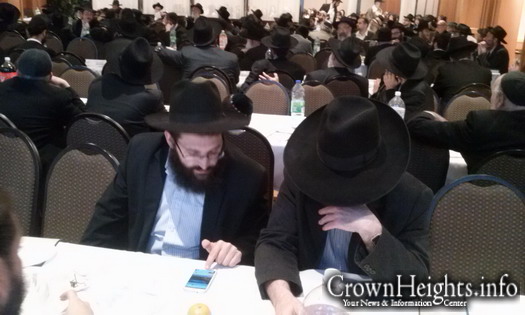
Montreal Gathers to Listen and Learn, and Live
It is one week before Gimmel Tammuz—the 20th anniversary of the passing of the Rebbe, Rabbi Menachem M. Schneerson, of righteous memory—and a group of several hundred people have gathered in a large synagogue in Montreal to learn his teachings.
Looking around the airy sanctuary, I see many faces.
I see some older people, the last survivors of the Stalinist oppression. Their experiences and tenacity shaped the urgency of the Rebbe’s call to action that would emerge during their lifetimes.
And a number of academics nearing retirement age are seated here—those who received guidance from the Rebbe in their younger years.
There are some Moroccan-born middle-agers who became part of the Chabad community in the 1970s and `80s. They were attracted by the Rebbe’s call to reach every Jew and were profoundly influenced by the generation of plucky Holocaust survivors who built the Chabad community in this part of Canada. They still retain their unique Sephardic identity and customs, layered upon and complimented by their Chabad education and worldview. Many of their children serve as Chabad emissaries all over the world.
There are young people my own age. The fortunate ones cherish a few childhood memories of visits to the Crown Heights neighborhood of Brooklyn, N.Y.; holidays spent at “770” (770 Eastern Parkway, the headquarters of the Chabad-Lubavitchmovement), and long lines waiting to receive a dollar and a blessing from the Rebbe.
And then there are the teens, who have never met the Rebbe in person.
We’re united by a common purpose—the drive to solidify and bolster our connection to the Rebbe and his legacy of Torah.
On the podium, Rabbi Yehuda Leib Schapiro starts to speak. He has served as rosh yeshivah (dean) of Yeshivah Gedolah of Greater Miami, Fla., for 40 years. But today, he comes with a prior distinction. For many years, he prepared the Rebbe’s talks for print, helping shape what would become Likutei Sichos, the 39-volume compendium of essays on virtually every area of Torah and life.
Citing eleven examples, Rabbi Schapiro shows how the Rebbe would often resolve apparent contradictions by stripping the issues to their core and demonstrating that two seemingly disparate notions were one.
One example is the Rebbe’s approach to the fact that Shabbat laws are deferred when lives are at stake.
“In the Rebbe’s view,” he explains, “Saving a life is not a suspension of Shabbat or merely an act calculated to facilitate the celebration of more Shabbats in the future—it is the very essence of Shabbat. G‑d gave us Shabbat as an expression of His special bond with His people, and through saving a life, we are extending the lives of those very people whom Shabbat glorifies.
“By understand what Shabbat is at its very essence,” he continues, “you understand how working to save a life is truly keeping Shabbat.”
When you look deeply, you see there is no contradiction.
The other examples ranged from the Rebbe’s approach to honoring parents, even in the midst of disagreements; to leaving Israel temporarily to welcome a new arrival; and the appointment of emissaries.
Living the Teachings
We break for the afternoon Minchah services. The gentleman behind me bolts out the door, clutching a radio. He is a member of Hatzolah, a volunteer corps of emergency medics.
At first glance, it seems he is missing out on the teachings yet to come. But, in essence, he is living message the Rebbe would often emphasize. Every life has essential meaning, and action is the main thing thing. Endeavoring to save another dies not detract from spiritual advancement; it spurs it.
When you look deeply, you see there is no contradiction.
As I sit and listen, I am momentarily transported to Miami Beach, where I studied as a teenager. Every afternoon, Rabbi Schapiro would teach us. His beard has turned grayer, but his voice is the same and the vivid clarity with which he recalls the Rebbe’s works—and the back-and-forth that went into the editing—remains the same.
The passage of time would appear to serve as a separation. But stripped to its core, these years, during which so much has been accomplished, have somehow managed to strengthen and solidify the bond between the Rebbe and his Chassidim.
When you look deeply, you see there is no contradiction.






































c.f.
b’h
In his characteristic manner – Rabbi Leib Schapiro speaks depth with clarity and precision. A pleasure to hear him. It would be good to have the full talk. Interesting report, thanks.